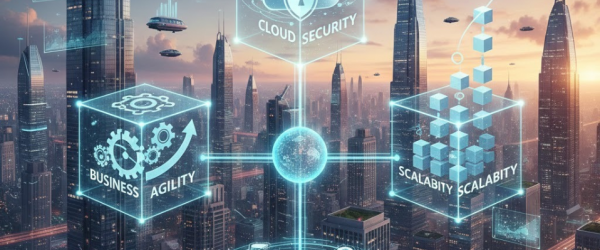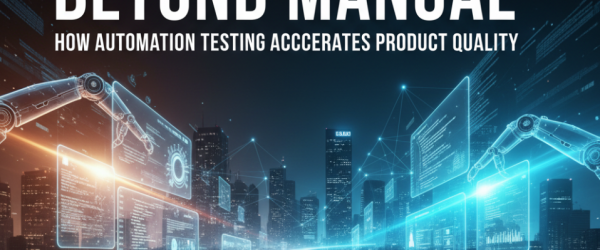For decades, the Information Technology (IT) department was often viewed as a cost center—a necessary engine for core business functions, but primarily responsible for maintenance and managing complexity. Today, in the era of exponential data growth and global competition, that view is obsolete. The complexity of modern hybrid and multi-cloud environments has surpassed the limits of human capability, requiring a new approach.
The solution lies in elevating Artificial Intelligence (AI) from a mere feature to a Strategic Partner integrated into every layer of the enterprise. This partnership is transforming IT from a reactive utility into a powerful, intelligent engine for scaling, innovation, and risk mitigation.
The New Mandate: Scaling Beyond Human Limits
Scaling a business today means scaling the supporting IT infrastructure faster, more securely, and more affordably than ever before. Traditional methods—adding more engineers or applying static automation rules—are no longer sustainable.
The market consensus confirms this necessity. According to Gartner, worldwide spending on AI software is projected to reach over $144 billion by 2025, underscoring AI’s move from experimental deployment to essential operational component (Gartner, 2024). Enterprises are investing because AI delivers what human teams cannot: the ability to process petabytes of data, predict future needs, and act in milliseconds.
The Three Pillars of Intelligent IT Scaling
AI acts as a strategic partner by injecting intelligence into the three core pillars of IT: Operations, Service, and Security.
1. Intelligent Operations and Resource Optimization
The biggest barrier to scale is often operational waste and latency. AI addresses this through AIOps, converting static, reactive processes into dynamic, self-optimizing systems.
- Predictive Scaling: Instead of waiting for traffic to spike and then reacting (auto-scaling), AI models analyze historical trends and real-time inputs to forecast demand. They automatically provision resources before the peak hits and decommission them instantly during lulls. This proactive management significantly reduces cloud waste. Research indicates that organizations leveraging AI for capacity optimization achieve 20% to 30% reduction in cloud operational costs (Gartner, 2023).
- Automated Root Cause Analysis (RCA): When an incident occurs, AI correlates thousands of logs and metrics across different systems to pinpoint the single root cause in seconds, drastically cutting Mean Time to Resolution (MTTR) and improving system uptime.
2. Cognitive Service and Support (The LLM Advantage)
Large Language Models (LLMs) are redefining the speed and quality of IT service delivery. They handle the “cognitive load,” freeing up specialized human talent.
- Intelligent Triage: LLMs analyze the text and context of support tickets to accurately classify, prioritize, and route issues, reducing manual triage time.
- Knowledge Synthesis: By instantly accessing and synthesizing information from vast knowledge bases, LLMs can resolve complex queries at the first point of contact. This capability leads to higher first-call resolution (FCR) rates and improved employee satisfaction. According to McKinsey, Generative AI in IT and software engineering is one of the top use cases expected to deliver trillions of dollars in economic value across the economy (McKinsey, 2023).
3. Proactive Risk and Security Mitigation
As enterprises scale, the attack surface expands exponentially. AI is the only effective defense against modern threats.
- Behavioral Defense: AI systems establish a baseline for normal behavior for every user and every device. They can detect subtle, non-signature-based anomalies—such as an unusual data transfer or a login from an unfamiliar location—that indicate an impending or active breach.
- Automated Containment: The strategic AI partner doesn’t just alert; it acts. Upon detecting a high-risk anomaly, the system can automatically revoke credentials, isolate the network segment, and contain the threat without human latency, significantly reducing the impact of a breach.
The Strategic Shift: From Maintenance to Innovation
The real value of AI as a strategic partner is its ability to liberate human capital. By taking over the tedious, high-volume tasks of monitoring, triage, and reactive management, AI allows highly skilled IT engineers to shift their focus to architecture, innovation, and building new revenue streams.
This transition requires a clear strategic roadmap, treating AI not as a separate project, but as the new operating system for all IT functions.
| IT Function | Traditional Model (Reactive) | AI Partnership Model (Proactive) | Strategic Outcome |
|---|---|---|---|
| Resource Mgmt. | Manual provisioning, reactive auto-scaling, and high cloud waste. | Predictive forecasting, autonomous scale-up/down. | 30% Cost Reduction and true elasticity. |
| Incident Response | Alert fatigue, manual log correlation, and slow MTTR. | Real-time anomaly detection, automated root cause analysis. | Maximized Uptime and engineer’s focus. |
| Service Desk | High FCR failure, time wasted on simple tickets. | Cognitive triage, LLM-driven knowledge resolution. | Improved Employee Experience and efficiency. |
Conclusion: The New Definition of Enterprise Scale
For enterprises looking to scale effectively, AI is the new mandate. It transforms IT from a necessary expenditure into a strategic source of competitive advantage. By embracing AI as a partner, organizations can move beyond the inherent limitations of human-managed complexity, achieve superior cost efficiency, and ensure their infrastructure is robust, intelligent, and truly ready for the future of business growth.







